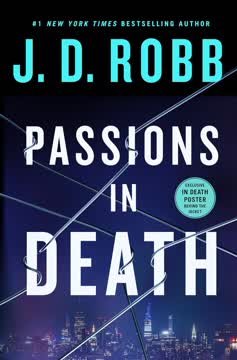Plot Summary
Gated Minds, Open Chains
The book opens by challenging the reader's assumption that their thoughts are truly their own. Icke argues that the foundation of human control is the manipulation of perception, which is achieved by controlling information. He introduces the concept of the "Global Cult," a hidden network that has always ruled by shaping collective beliefs, not by brute force. The masses, he claims, are kept in ignorance, their perceptions programmed from birth by education, media, and authority. This programming leads to a society where people's thoughts, opinions, and even their sense of self are not their own, but are instead the result of relentless, repetitive messaging. The first step to freedom, Icke insists, is to recognize the bars of this mental cage.
The Cult's Invisible Web
Icke describes a global network of secret societies and power structures—the "Cult"—that manipulates governments, corporations, media, and science. This web, he claims, is hierarchical, with a tiny inner circle dictating the agenda to the rest. The Cult's power comes from its ability to remain unseen, operating through compartmentalization and infiltration. Its goal is the centralization of power, achieved by orchestrating crises and offering pre-planned solutions. The Cult's influence is everywhere, from the United Nations to Silicon Valley, and its methods are timeless: divide and rule, problem-reaction-solution, and the creation of false narratives to justify ever-greater control.
Manufactured Crisis, Programmed Response
The book details how crises—especially the COVID-19 pandemic—are manufactured or exploited to drive the Cult's agenda. Icke argues that the pandemic was not a natural disaster but a psychological operation designed to instill fear, obedience, and dependency. He claims that the response—lockdowns, social distancing, and mass vaccination—was pre-planned, with behavioral scientists and media working in concert to terrify the public. The result is a society willing to surrender freedoms for the illusion of safety, and a population conditioned to accept top-down control as the new normal.
The Virus That Wasn't
Icke asserts that the SARS-CoV-2 virus has never been scientifically isolated or proven to exist as described. He claims that the entire pandemic is based on a computer-generated fiction, with "cases" and "deaths" manufactured through reclassification of other illnesses and the misuse of testing. The narrative of a deadly, invisible enemy is, in his view, the perfect tool for justifying unprecedented restrictions on freedom and for introducing new forms of surveillance and control. The real contagion, he argues, is fear and belief in authority.
The PCR Illusion
Central to the pandemic narrative, Icke explains, is the PCR test, which he claims is not fit for diagnosing infectious disease. He details how the test's high amplification cycles produce false positives, creating the illusion of a pandemic. This "case-demic" is then used to justify lockdowns, mask mandates, and the destruction of livelihoods. The manipulation of data, he argues, is deliberate, and the medical establishment is complicit—either through ignorance or willful obedience. The PCR test, in Icke's view, is the linchpin of the COVID deception.
Lockdown: Fear as Control
Icke explores the psychological and societal impact of lockdowns, arguing that they are not about health but about control. He describes how isolation, economic destruction, and constant fear messaging break down resistance and foster dependency on the state. The elderly and vulnerable are sacrificed, children are traumatized, and the fabric of society is torn apart. The true purpose, he claims, is to reengineer society into a "Hunger Games" model: a tiny elite, a militarized enforcer class, and a dependent, powerless majority. The lockdowns are a rehearsal for permanent technocratic rule.
The Behavioral Architects
Behind the scenes, Icke reveals, are teams of behavioral scientists and psychologists—"the architects"—who design the messaging and policies that drive compliance. He details the role of groups like the UK's Behavioral Insights Team and SPI-B, which use fear, guilt, and social pressure to manipulate public behavior. The media, education system, and even entertainment are weaponized to reinforce the narrative and marginalize dissent. The goal is not just obedience, but the internalization of the new values: self-censorship, suspicion of others, and unquestioning trust in authority.
Woke, Wetiko, and Division
Icke connects the rise of "wokeness," identity politics, and cancel culture to the Cult's strategy of division. He introduces the concept of Wetiko—a mind virus of fear, victimhood, and self-obsession that spreads through society, turning people against each other and themselves. The Cult, he argues, funds and promotes movements that appear to fight for justice but actually deepen division and distract from the real power structure. The result is a society fragmented by race, gender, and ideology, unable to unite against its true oppressors.
The Vaccine as Trojan Horse
Icke claims that the COVID-19 vaccines are not traditional vaccines but experimental gene therapies designed to alter human biology. He warns of unknown long-term effects, including infertility, autoimmune disorders, and even changes to consciousness. The vaccine rollout, he argues, is less about health than about establishing a system of digital identity, surveillance, and social credit. Vaccine passports are the next step toward a world where access to work, travel, and even basic rights depends on compliance with ever-changing mandates. The "cure," he insists, is more dangerous than the disease.
Human 2.0: Synthetic Destiny
The book delves into the agenda of transhumanism: the merging of humans with technology, AI, and synthetic biology. Icke describes how the Cult seeks to transform humanity into a controllable, programmable species—"Human 2.0"—through genetic engineering, nanotechnology, and brain-computer interfaces. The Internet of Bodies, smart cities, and digital currencies are all pieces of this plan. The ultimate goal is to sever the connection to higher consciousness, reduce people to data points, and create a hive mind under centralized AI control. The "Great Reset" is, in his view, the blueprint for this synthetic future.
The Simulation and the Parasite
Icke presents his cosmology: reality is a simulation, a digital hologram created by a non-human, parasitic consciousness he calls the Archons (or Wetiko). This force, he claims, feeds on fear, division, and suffering, and has infiltrated human society through the Cult. The simulation is designed to keep people trapped in five-sense perception, disconnected from their true, infinite nature. The Archons lack creative power and must mimic, invert, and parasitize human consciousness. The only escape, Icke argues, is to awaken to the illusory nature of the matrix and reclaim one's true identity as infinite awareness.
The Power of Perception
Icke emphasizes that perception is the key to both enslavement and liberation. The Cult's power depends on people believing in their own powerlessness, in the narratives of fear and division. By changing one's perception—seeing through the programming, questioning authority, and recognizing the interconnectedness of all life—one can break the spell. The heart, not the head, is the gateway to higher awareness and unity. Laughter, love, and self-respect are the antidotes to fear and control. The revolution, he insists, begins within.
Breaking the Spell
The book calls for mass non-cooperation with the systems of control: refusing to wear masks, take unnecessary vaccines, or obey unjust laws. Icke argues that the few can only rule the many with the consent of the many. By withdrawing that consent—peacefully but firmly—people can collapse the pyramid of power. He advocates for the revival of common law, citizen's arrests of abusive officials, and the creation of parallel structures outside the control of the Cult. The key is courage, unity, and the refusal to be intimidated or divided.
The Pushbacker's Dilemma
Icke warns against the "Save Me Syndrome"—the tendency to look for external saviors, whether politicians, movements, or QAnon-style psyops. He argues that both sides of the political spectrum are manipulated by the Cult, and that controlled opposition is used to identify, isolate, and neutralize dissent. The only real solution, he insists, is self-empowerment and collective action from the ground up. Waiting for someone else to fix the world is, in his view, another form of submission.
Escaping the Matrix
The path to freedom, Icke writes, is awakening to one's true nature as infinite consciousness, not a powerless "little me." He draws on Gnostic, Native American, and spiritual traditions to describe the process of breaking the Wetiko/Archon spell: opening the heart, expanding awareness, and seeing through the illusions of identity and division. Synchronicity, intuition, and unity are signs of this awakening. The Cult's greatest fear, he says, is a humanity that remembers its true power and refuses to play the game.
The Heart's Revolution
Icke concludes that the most radical act is to live from the heart: to love, to laugh, to refuse fear and hatred. The heart, he argues, is the bridge to higher awareness and the antidote to Wetiko. By opening the heart, people can reconnect to the infinite, dissolve the barriers of race, gender, and ideology, and create a new world based on compassion and freedom. The revolution is not against others, but against the illusions within oneself.
The Endgame of Control
The final chapters warn of the dangers ahead: the push for digital identity, microchipping, and the merging of biology with AI. Icke describes the "Great Reset" as the last stand of the Cult, a desperate attempt to lock humanity into a synthetic, surveilled, and programmable existence. But he insists that the plan can only succeed if people remain asleep and compliant. The choice, he says, is between acquiescence and awakening, between a world of fear and a world of love.
Reclaiming Reality
The book ends with a call to action: to break the spell, refuse to comply, and reclaim reality from the Cult. Icke urges readers to unite across divisions, to support each other, and to create new systems based on truth and freedom. The power of love, he insists, is the ultimate weapon against tyranny. The future is not set; it is created by the choices people make now. The time for passive hope is over—the time for conscious, courageous action is now.
Characters
The Global Cult
The Cult is the book's central antagonist: a secretive, intergenerational network of elites, secret societies, and technocrats who manipulate world events from the shadows. Their power lies in their invisibility, their mastery of psychological operations, and their ability to infiltrate every institution—government, media, science, and education. The Cult's psychology is one of psychopathy, inversion, and parasitism: they lack empathy, thrive on division and suffering, and seek to centralize all power. Over time, their methods have evolved from overt tyranny to subtle mind control, but their goal remains the same: total domination of humanity through the manipulation of perception and the creation of a synthetic, programmable reality.
The Archons / Wetiko
The Archons (or Wetiko) are described as a non-human, parasitic force that feeds on fear, division, and suffering. They are the ultimate source of the Cult's agenda, operating from beyond the visible spectrum, manipulating reality through the creation of a digital simulation. Psychologically, they represent the shadow, the mind virus of fear, victimhood, and self-obsession. Their strategy is to sever humans from their true, infinite nature, trapping them in five-sense perception and programming them to serve as energetic food. The Archons lack creative power and must mimic, invert, and parasitize human consciousness. Their greatest fear is a humanity that awakens to its true power and refuses to play their game.
The Masses ("World Number 1")
The general population is depicted as the unwitting victim of the Cult's programming. From birth, their perceptions are shaped by education, media, and authority, leading to a life of conformity, fear, and self-censorship. Most people, Icke argues, are not evil but are trapped in a perceptual prison, unable to see the bars. Their psychology is one of learned helplessness, Stockholm syndrome, and the internalization of external narratives. The masses are both the source of the Cult's power (through their compliance) and the key to its downfall (through their potential awakening).
The Behavioral Architects
This group includes psychologists, behavioral scientists, and technocrats who design the messaging, policies, and technologies that drive public obedience. They operate through government advisory bodies, think tanks, and media, using fear, guilt, and social pressure to shape behavior. Their psychology is technocratic, utilitarian, and detached; they see people as data points to be nudged and managed. Over time, their methods have become more sophisticated, blending neuroscience, AI, and social engineering to create a "new normal" of self-policing and internalized control.
The Woke / Identity Activists
Icke portrays the "woke" as a manipulated class, funded and promoted by the Cult to sow division and distract from real power structures. Their psychology is one of victimhood, self-obsession, and moral absolutism, often turning on their own in purity spirals. While many are sincere, their movements are, in Icke's view, hijacked to deepen fragmentation and prevent unity against the true oppressors. Over time, their activism becomes a tool for censorship, surveillance, and the erosion of genuine freedom.
The Pushbackers
These are the individuals and groups who see through the programming and resist the Cult's agenda. Their psychology is characterized by skepticism, courage, and a longing for truth and freedom. However, Icke warns that they are vulnerable to controlled opposition, false saviors, and division. The pushbackers' journey is one of awakening, self-empowerment, and the struggle to unite across artificial boundaries. Their potential, if realized, is to catalyze a mass awakening and reclaim reality from the Cult.
The Technocrats / Transhumanists
This group includes the architects of the "Great Reset," transhumanist visionaries, and AI developers who seek to merge humans with machines. Their psychology is one of hubris, reductionism, and a belief in the perfectibility of humanity through technology. They are both the high priests of the new order and, in Icke's view, unwitting servants of the Archons. Over time, their agenda shifts from convenience and efficiency to total surveillance, control, and the erasure of the human soul.
The Heart-Centered Awakened
Icke's ideal is the heart-centered individual: someone who lives from love, compassion, and unity, refusing to be divided or controlled by fear. Their psychology is expansive, intuitive, and resilient. They are immune to the Wetiko mind virus, able to see through illusions and connect with the infinite. Over time, their influence grows as more people awaken, offering a blueprint for a new society based on freedom, truth, and mutual support.
The Controlled Opposition
Icke warns of movements, leaders, and narratives that appear to resist the Cult but are actually designed to identify, isolate, and neutralize dissent. Their psychology is manipulative, often blending truth with disinformation to mislead and demoralize. Over time, they serve to reinforce the boundaries of the matrix, keeping people waiting for external rescue instead of taking action themselves.
The Individual Reader
Ultimately, the reader is the protagonist of the book's psychological drama. Icke addresses the reader directly, challenging them to question their beliefs, reclaim their power, and join the heart-centered revolution. The reader's journey is from programmed compliance to conscious, courageous action—a microcosm of the collective awakening Icke envisions.
Plot Devices
Problem-Reaction-Solution
This classic Icke device is the backbone of the narrative: the Cult creates or exploits a crisis (problem), manipulates public fear and outrage (reaction), and then offers a solution that advances its agenda (solution). This structure is used to explain everything from pandemics to wars to economic collapses. The device is effective because it mirrors real psychological processes—fear, confusion, and the longing for safety—and because it can be endlessly repeated with new crises.
The Simulation Hypothesis
Icke frames the entire story within the concept of a digital, holographic simulation created by a non-human parasite. This device allows him to connect disparate phenomena—pandemics, technology, identity politics—under a single metaphysical umbrella. It also serves as a metaphor for psychological manipulation: just as the simulation is an illusion, so are the narratives that shape perception.
The Mind Virus (Wetiko/Archons)
The Wetiko/Archon device personifies the forces of fear, division, and psychopathy as a literal mind virus that spreads through society. This device is both a metaphor for mass psychology and a cosmological explanation for evil. It allows Icke to frame social phenomena—wokeness, compliance, hatred—as symptoms of infection, and to propose love and unity as the cure.
Controlled Opposition and False Saviors
Icke uses the device of controlled opposition—movements, leaders, and narratives that appear to resist the Cult but actually serve its interests—to warn against passivity and misplaced trust. This device creates tension and uncertainty, forcing the reader to question not only authority but also dissent.
The Behavioral Science Conspiracy
The book foregrounds the role of psychologists, behavioral scientists, and technocrats in designing the "new normal." This device grounds the narrative in real-world institutions and policies, making the abstract threat of the Cult tangible and immediate. It also serves as a warning about the dangers of social engineering and the loss of individual autonomy.
Foreshadowing and Pattern Recognition
Icke repeatedly uses foreshadowing—citing past events, documents, and simulations (like Event 201)—to show that current crises are not random but part of a long-term plan. He encourages the reader to "connect the dots," training them to see patterns and question official narratives. This device reinforces the book's central message: that perception is the key to both enslavement and liberation.
Analysis
David Icke's Perceptions of a Renegade Mind is a sweeping, polemical manifesto that weaves together conspiracy theory, social critique, and spiritual cosmology. At its core, the book is a meditation on the power of perception: how it is shaped, how it is weaponized, and how it can be reclaimed. Icke's central thesis is that humanity is trapped in a psychological and metaphysical matrix, engineered by a hidden elite (the Cult) and a non-human parasitic force (the Archons/Wetiko). The COVID-19 pandemic, in his view, is not a health crisis but a psychological operation designed to accelerate the transition to a technocratic, transhumanist society—"Human 2.0"—where freedom, individuality, and even the soul are at risk. The book's lessons are both cautionary and empowering: it warns against the dangers of fear, division, and passive compliance, while urging readers to awaken to their true, infinite nature and to unite in love and non-cooperation with tyranny. In a world of manufactured crises and engineered consent, Icke insists, the only real revolution is a revolution of consciousness. Whether one agrees with his conclusions or not, the book is a passionate call to question everything, to reclaim agency, and to recognize that the many are always stronger than the few—if only they remember who they are.
Last updated:
Review Summary
Desperation in Death receives mostly positive reviews, with readers praising its intense storyline, character development, and handling of sensitive topics. The book deals with child trafficking, which some found disturbing but well-executed. Reviewers appreciated the inclusion of familiar characters and the exploration of Eve's past. Many noted the emotional impact and police procedural aspects. Some criticized repetition and pacing issues. Overall, fans found it a strong addition to the series, while acknowledging its darker tone compared to previous installments.
In Death Series Series
Similar Books
Download PDF
Download EPUB
.epub digital book format is ideal for reading ebooks on phones, tablets, and e-readers.
















